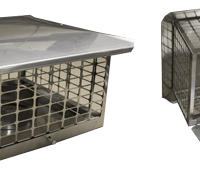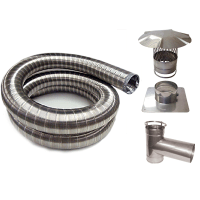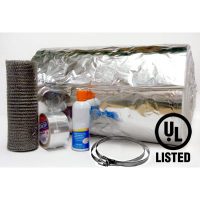Carbon monoxide and fireplaces are a dangerous combination. Carbon monoxide is a type of gas that kills almost 300 people in their homes each year. Carbon monoxide is given off by burning any fuel. Therefore, any fuel-burning appliance in the home is a possible CO source. When appliances are kept in good working form, they produce little CO. Appliances that aren’t operating properly can produce deadly CO concentrations in your home. CO poisoning can also be caused by using charcoal grill inside the house or when a car is left running in the garage. Sources of carbon monoxide include room heaters, furnace, charcoal grill, range, water heater, auto in closed garage, and fireplaces. Precautionary measures must be taken to avoid the deadly duo that’s carbon monoxide and fireplaces that are inadequately maintained.
Fireplace safety tips include the following:
· Fuel-burning furnaces, appliances, or fireplaces should have at least one CO detector that’s ideally situated, such as in a hallway or sleeping area.
· The fireplace damper must be opened before lighting the fire. It should be kept open until the ashes have cooled. The damper must not be closed if the ashes are still warm. The build-up of poisonous gases inside the home can be avoided if the damper is left open. When carbon monoxide
· Gasoline, charcoal lighter or other fuel should not be used to light or relight a fire since the vapors can explode. Flammable materials must never be kept near a fire. And, flammable liquids must never be stored in the home. Charcoal must never be used in a fireplace because of the risk of carbon monoxide poisoning.
· A chimney that is blocked or clogged due to leaves or soot can cause combustion byproducts, including CO, to be expelled into the home. Cracked masonry could also cause an obstruction. Regular inspection and cleaning using a chimney sweep can help helps prevent or remove blockages. The chimney could also be fitted with a screen cap to dissuade nest-building.
· A common source of carbon monoxide include wood-burning and gas powered fireplaces. To make sure there is fresh air, the window should be left open a few inches. Treated woods, painted wood, and scrap lumber should not be burned in a wood burning fireplace. Only seasoned firewood must be burned.
· The chimney dampers must also be opened before using fireplaces. Opening it can produce a draft that goes up the chimney. This will provide the fire air to burn efficiently at the same time providing ventilation of smoke and carbon monoxide.
· Gas logs or burners emit a lot of CO since the less-efficient, yellow flames are desired for a cozy atmosphere. Those who own ventless fireplaces must be extra careful since these appliance expel all combustion byproducts into the room. While the fireplace is run, the combustion process is fueled by the oxygen taken from the room. When there is less oxygen, the combustion becomes less efficient, giving off more CO.
· Regular inspection and maintenance of the flue, burner, and chimney should significantly lessen any CO troubles affecting the furnace.
· A qualified technician must be hired to examine chimneys and fuel-burning appliances. This is to ensure that these devices are functioning properly. The technician should also check that there is no blockage that’s preventing the harmful fumes from being vented out of the house.
These are just some measures that people can take to guarantee a safety home. It’s a better alternative to spend a few dollars on proper maintenance of the home than to suffer the consequences of neglect.
JB Anthony is the webmaster of Fireplace-Ideas.Info. Visit Fireplace-Ideas.Info now for tips on fireplaces, fireplace designs, and fireplace accessories.






